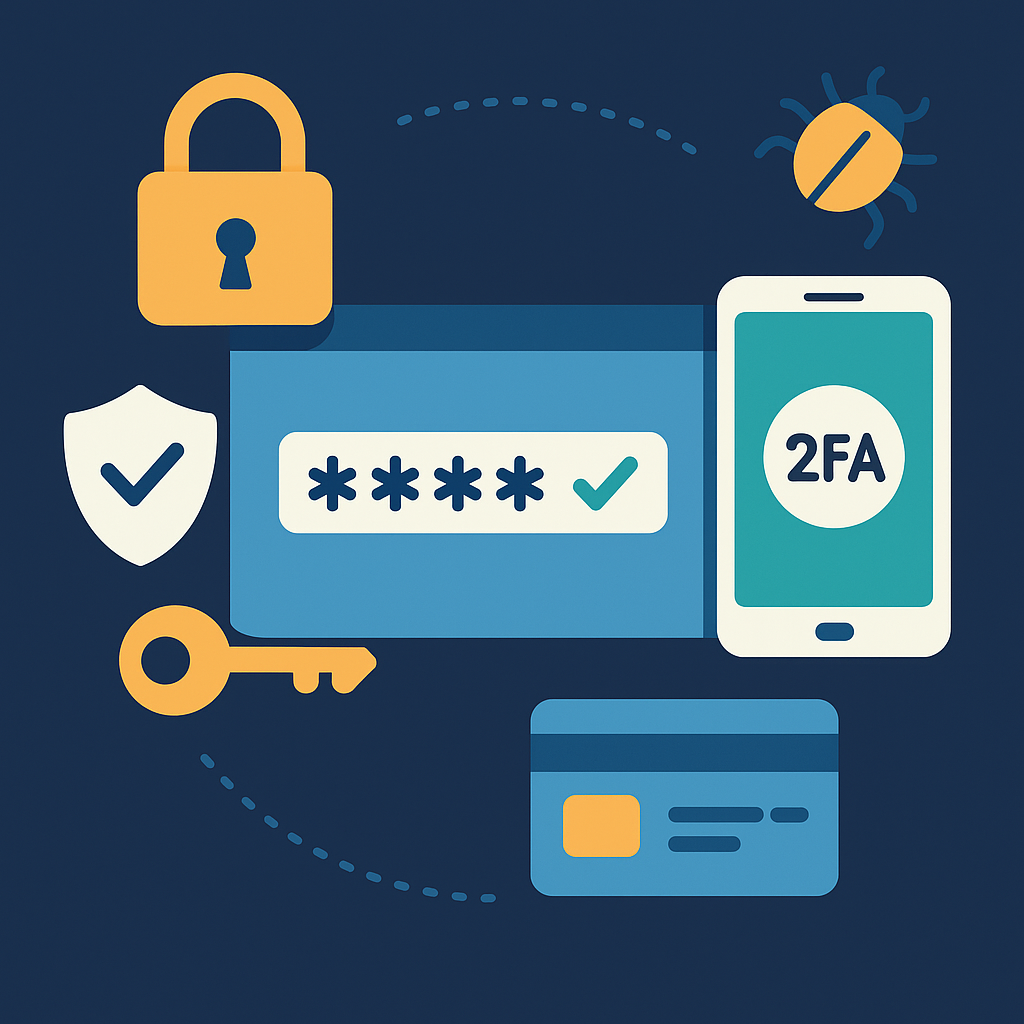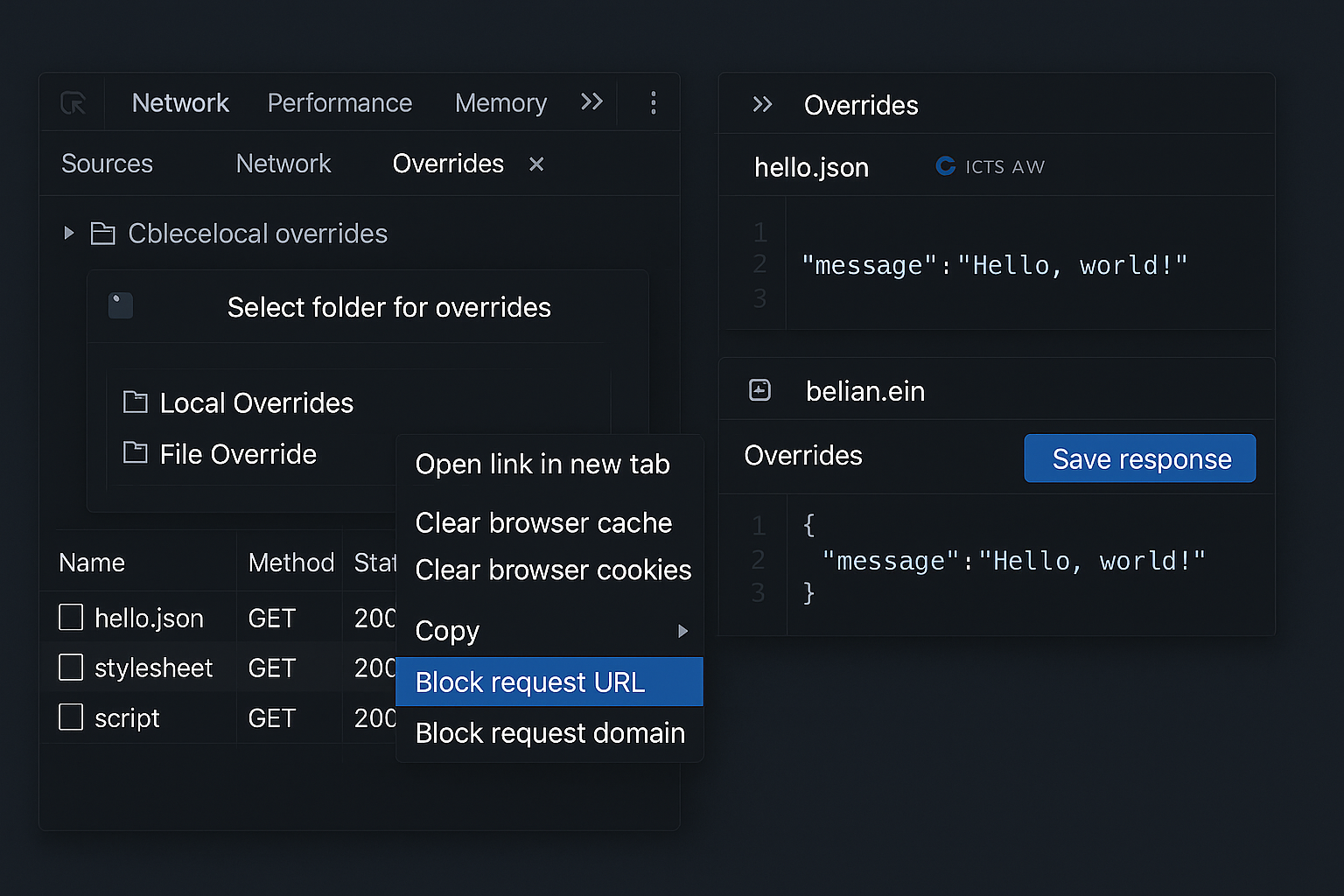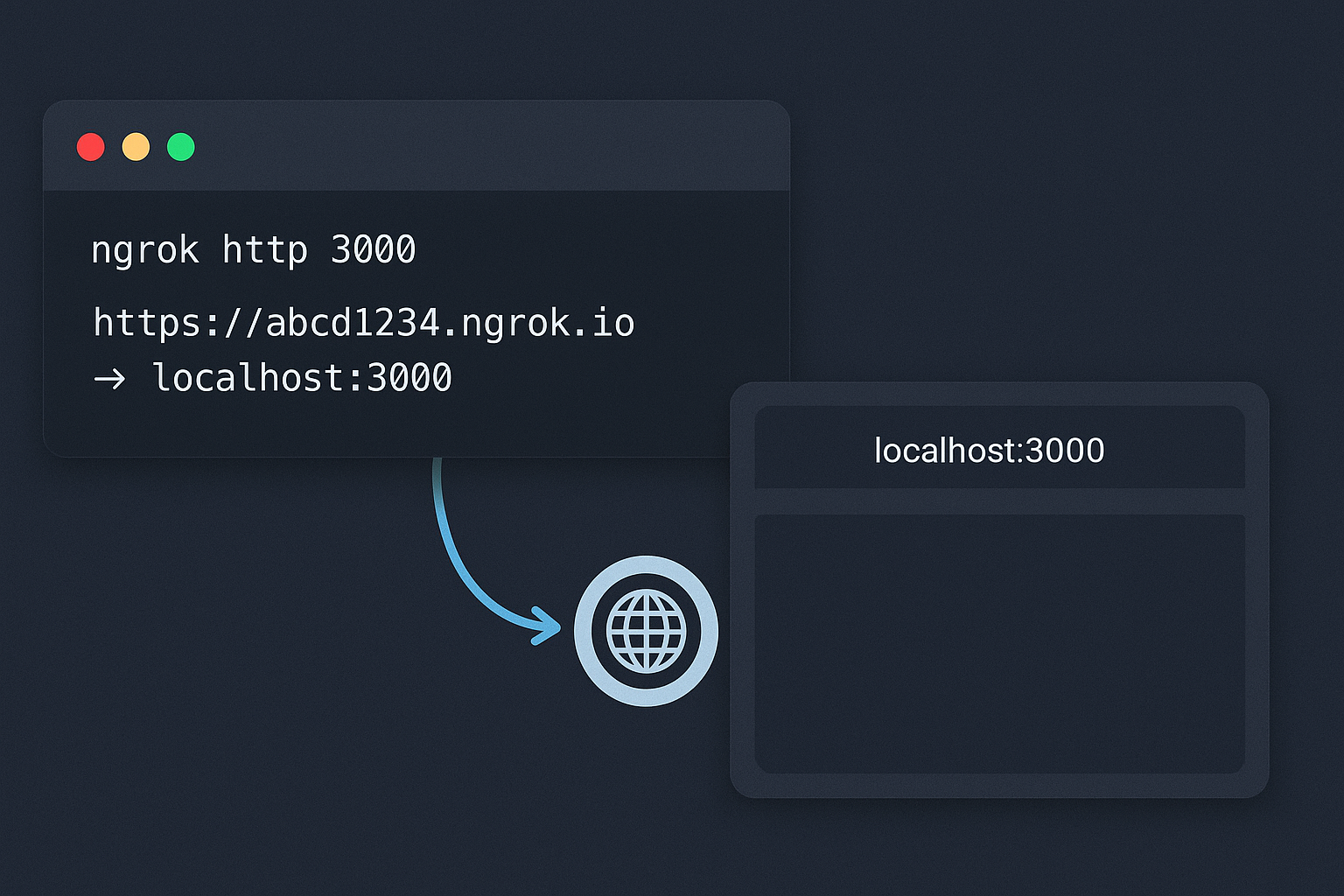With the rise in cyberattacks, data leaks, and online scams, protecting your digital life has never been more important. Whether you’re a developer or a regular user, understanding the risks and adopting good security practices can make all the difference.
In this post, I’ve put together a set of practical tips about passwords, password managers, two-factor authentication (2FA), and protection against malware. It’s a true roadmap to strengthen your personal security on the internet.
Study roadmap
This content is divided into essential topics:
- Passwords (weak and strong)
- Password managers
- Two-factor authentication (2FA)
- Malware and prevention
If you follow these practices in your daily life, you’ll be much better prepared against common threats.
Passwords: your first line of defense
Weak (and common) passwords
Weak passwords are easy to guess or crack. They are usually:
- Short: less than 8 characters (e.g.,
123456,qwerty) - Predictable: common words or sequences (
abcdef,password) - Personal: names, birthdates, favorite soccer teams
- Reused: used on multiple sites, increasing the risk
According to the NordPass report, the most commonly used passwords in Brazil in 2024 include:
1. 123456
2. qwerty123
3. qwerty1
4. 123456789
5. 12345678
6. 12345
7. 102030
8. admin
9. Brasil
10. Qwerty1!Leetspeak doesn’t help
Many users try to “disguise” passwords using leetspeak (replacing letters with numbers):
- A → 4 or @
- E → 3
- I → 1
- S → 5 or $
Example: Gr3m1o1983 or Int3rn@ci0n@l2006
Although they may seem more “complex”, these variations are easy to break with automated attacks. Don’t fall for that trap.
How to create a strong password
A strong password should be:
- Long: at least 12 character
- Varied: uppercase letters, lowercase letters, numbers, and symbols
- Not obvious: no common words or personal information
- Unique: different for each account
Examples of strong passwords (randomly generated):
%Z74*7#G36%J#4@@%K$p9NHTYqL9Y3R9E@&V^^n&*9
45c$6!43ARjo6XzYG4D$e2%4RZc#!V*vS!Wt67#L58You don’t need to memorize all of that. That’s where the next point comes in.
Password manager
What it is and why to use it
A password manager is a tool that securely stores and organizes your passwords. It:
- Stores everything in an encrypted vault
- Generates strong, unique passwords for each site
- Automatically fills out forms
- Syncs across devices
- Can store secure notes (e.g., API tokens, banking information)
Popular examples:
Practical tip: Use Bitwarden’s password generator to create random passwords and store them securely. Only you (with your master password) will be able to access them.
The master password: use a passphrase
Your master password is the key that unlocks everything — so it needs to be strong but also memorable.
Instead of a short and complicated password, use a passphrase:
"EuGostoDeCaminharNaPraiaComMeuCachorroTodoDomingoQueTemSol!"It’s long, unique, and much more secure than something like S3nh@123.
Enable two-factor authentication (2FA)
What is 2FA?
It’s an extra layer of security beyond your password. When logging in, you need to:
- Something you know (your password)
- Something you have (phone, app, token)
How to activate:
- Go to your account’s security settings
- Find “Two-Factor Authentication” or “2FA”
- Choose the method:
- Recommended:
- Authentication app (Google Authenticator, Microsoft Authenticator)
- Tip: Prefer Microsoft Authenticator — it syncs with your account and can be easily restored if you change your phone
- Other options:
- SMS code
- Email code
- Physical keys (e.g., YubiKey)
- Recommended:
Use 2FA on:
- Email accounts
- Social media
- Banks and fintechs
- Work tools (GitHub, Google, Microsoft, etc.)
Protecting yourself from Malware
What is malware?
Malware is a malicious software that damages system or steals data. The main types are:
- Virus: attach themselves to files and spread to other programs or devices
- Worms: spread through the network without needing to attach to files
- Trojans: disguised as legitimate software to trick users
- Spyware: collects data without you knowing
- Adware: shows unwanted ads on your device
- Ransomware: locks your files and demands a ransom to unlock them
How to protect yourself:
- Updated antivirus (Windows Defender already helps)
- Active firewall
- Keep everything up to date (browser, OS, apps)
- Avoid suspicious downloads
- Be careful with strange emails and links
Tip: Get used to checking the website domain before entering your information. A “1” insted of an “l” can fool you easily (e.g.,
go0gle.com,gma1l.com).
Conclusion
Your online security starts with simple habits.
- Create strong and unique passwords
- Use a password manager
- Enable two-factor authentication (2FA)
- Keep your devices protected from malware
By following this simple roadmap, you’ll already be way ahead of most users — even many devs out there.
Don’t wait for an attack to change your habits. Start today.


